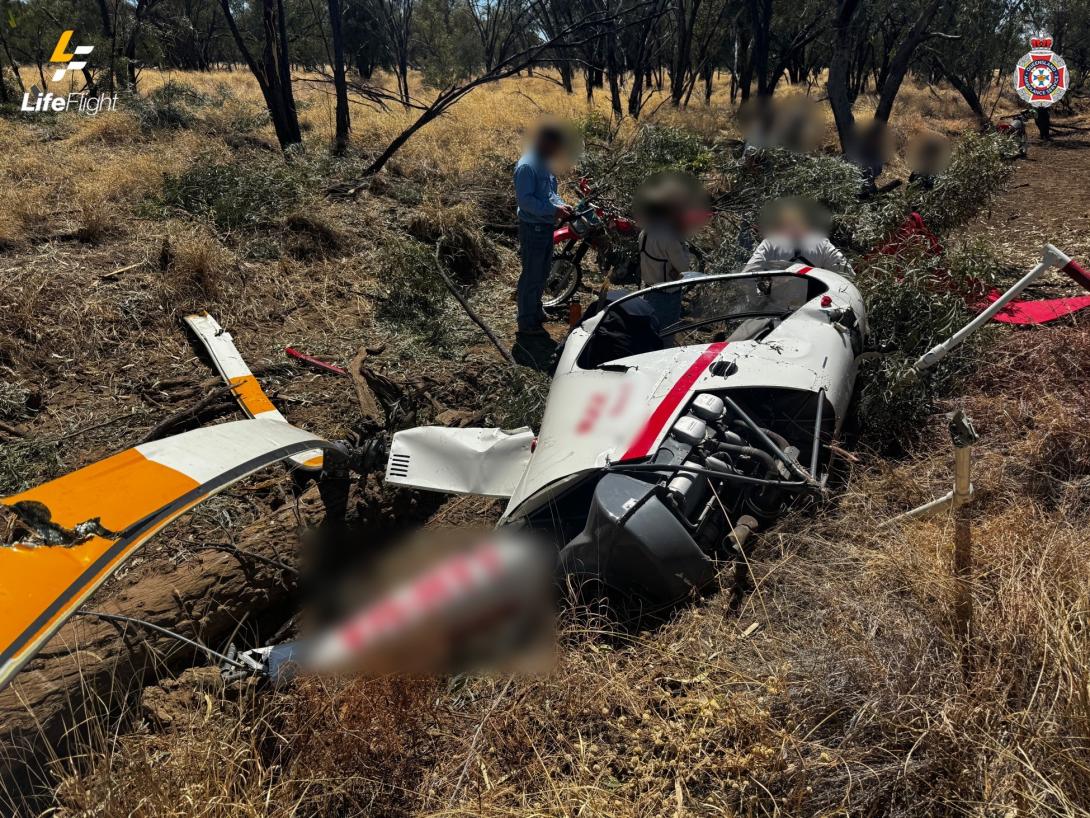What happened
At about 0625 local time on 6 September 2025, the pilot and sole occupant of a Robinson R22 helicopter departed Cloncurry Airport, Queensland, to conduct commercial aerial mustering operations about 100 km north of Cloncurry. At about 0830 the pilot identified a small mob of cattle under trees in a dry creek bed. Attempting to move the stock, the pilot turned the aircraft downwind and recalled the aircraft descended during the turn. While attempting to arrest the rate of descent the pilot increased power as they attempted to avoid a dead tree which they estimated was about 6–8 m high. However, as the aircraft was already at maximum power the pilot was unable to gain sufficient height and the helicopter collided with the tree.
The pilot recalled the tree penetrated the windscreen and that the helicopter began to rotate. The helicopter then impacted terrain on its left side, temporarily rendering the pilot unconscious. The aircraft came to a stop in a dry creek bed about 20 m from the impact tree. The helicopter sustained substantial damage: the tail rotor and horizontal stabiliser separated from the main fuselage during the accident sequence and were located in close proximity to the tree (Figure 1).

Source: LifeFlight, modified by the ATSB
After regaining consciousness, the pilot recalled they were held in their seat by the seatbelt and freed themselves from the wreckage. They contacted nearby ground crew on motorcycles via two-way radio to request assistance. The operator advised that the onboard tracking and phone records showed the pilot then called the operator about 15 minutes after the impact with the tree.
The pilot had been wearing a helmet which sustained minor damage. The pilot sustained serious injuries that included cracked vertebrae and was airlifted to Mount Isa hospital later that morning.
The 2014 CASA aerial mustering sector risk profile identified some of the key risks during aerial mustering operations stating:
The aerial mustering sector is hazard rich due to the inherent characteristics of the operation, such as very low level flying, high workload, negative effects from weather, obstacles such as power lines, trees, and terrain, pilot distraction, small power margins, and extended time operating within the shaded area of the height/ velocity diagram (‘deadmans curve’). In some parts of Australia, military aircraft may intrude into airspace above cattle stations which could cause airborne conflict. Pilot training, supervision and mentoring play an important role in developing pilot skills to manage aerial mustering manoeuvres.
Safety message
Aerial stock mustering involves operating in an inherently hazardous environment – aircraft are manoeuvred at very low level, close to obstacles. Low‑level operations in small helicopters often result in minimal available power margins because reduced airspeeds and abrupt manoeuvring of the helicopter both require additional power. When the helicopter’s power required is greater than the power available, the aircraft is unable to maintain height and can cause the pilot to attempt to apply additional collective[1] pitch. The result is a reduction in rotor RPM and therefore further loss of altitude. Also, low‑level flight reduces the time available for pilots to apply corrective techniques to restore rotor RPM and level flight.
Several Robinson Helicopter Safety Notices discuss the risks involved with low rotor RPM and are available on its website robinsonheli.com.
Operators and pilots of Robinson R22 and other smaller helicopters, especially those used for low-level aerial work such as mustering, are encouraged to review the causes, effects and recovery techniques for low rotor RPM and ensure they avoid low rotor RPM situations at low level in environments where obstacles may present a significant hazard.
About this report
Decisions regarding whether to conduct an investigation, and the scope of an investigation, are based on many factors, including the level of safety benefit likely to be obtained from an investigation. For this occurrence, no investigation has been conducted and the ATSB did not verify the accuracy of the information. A brief description has been written using information supplied in the notification and any follow-up information in order to produce a short summary report, and allow for greater industry awareness of potential safety issues and possible safety actions.
[1] The collective control changes the pitch angle of all main rotor blades.


